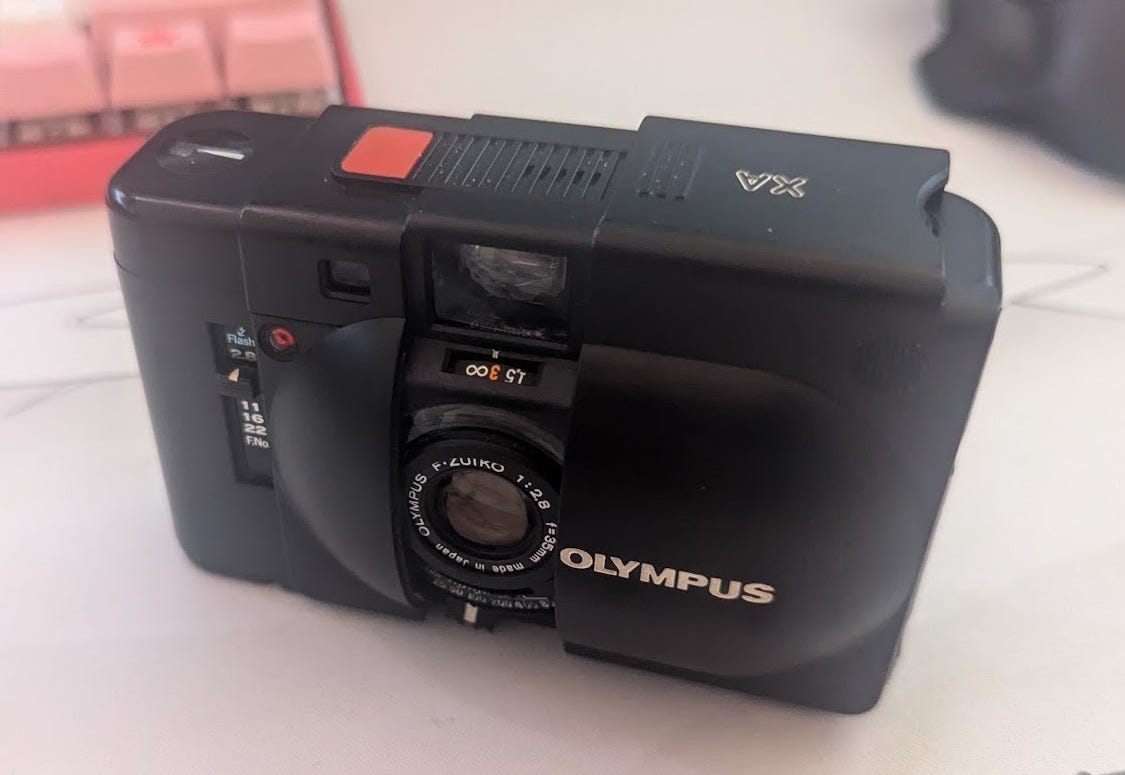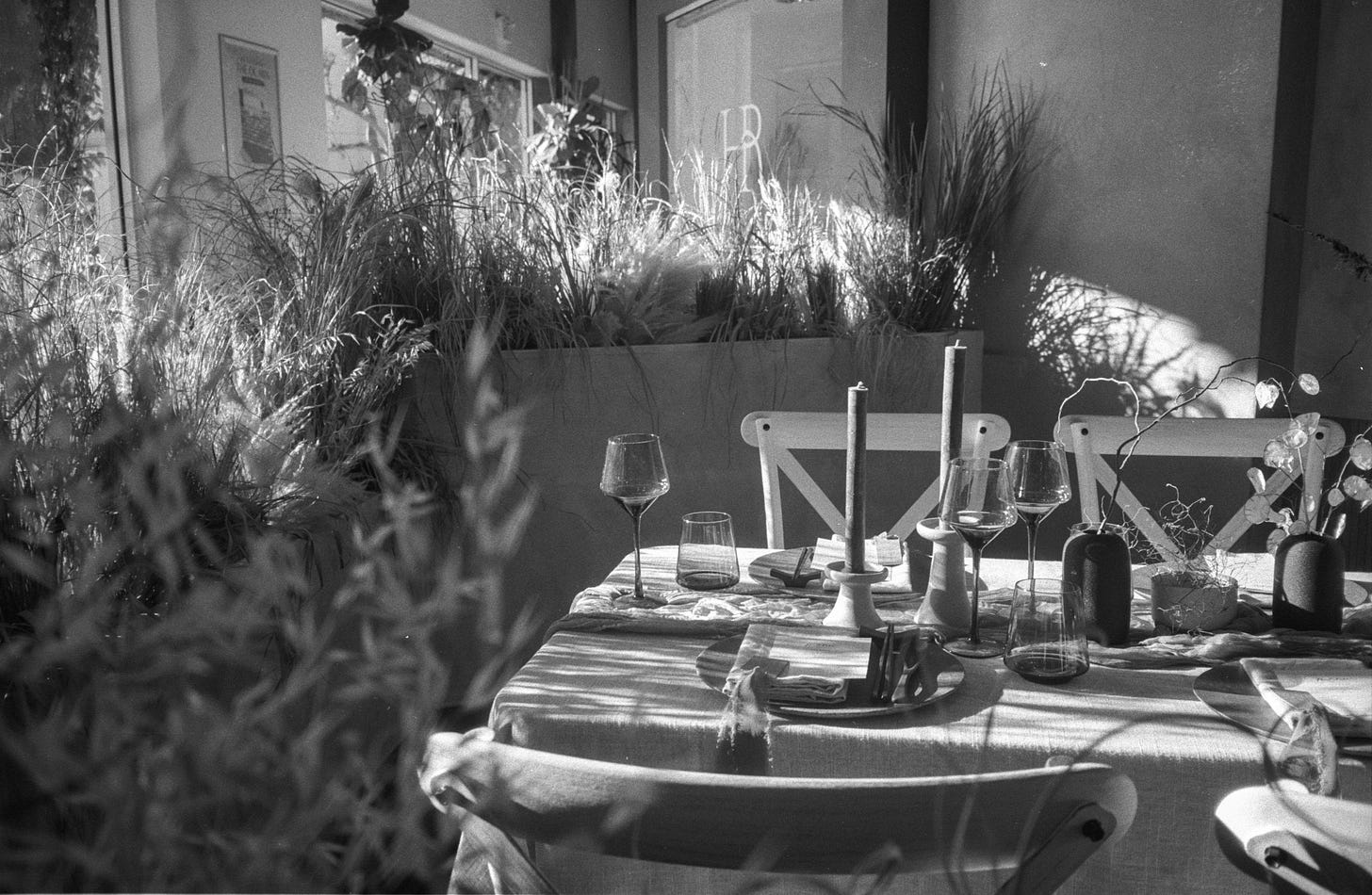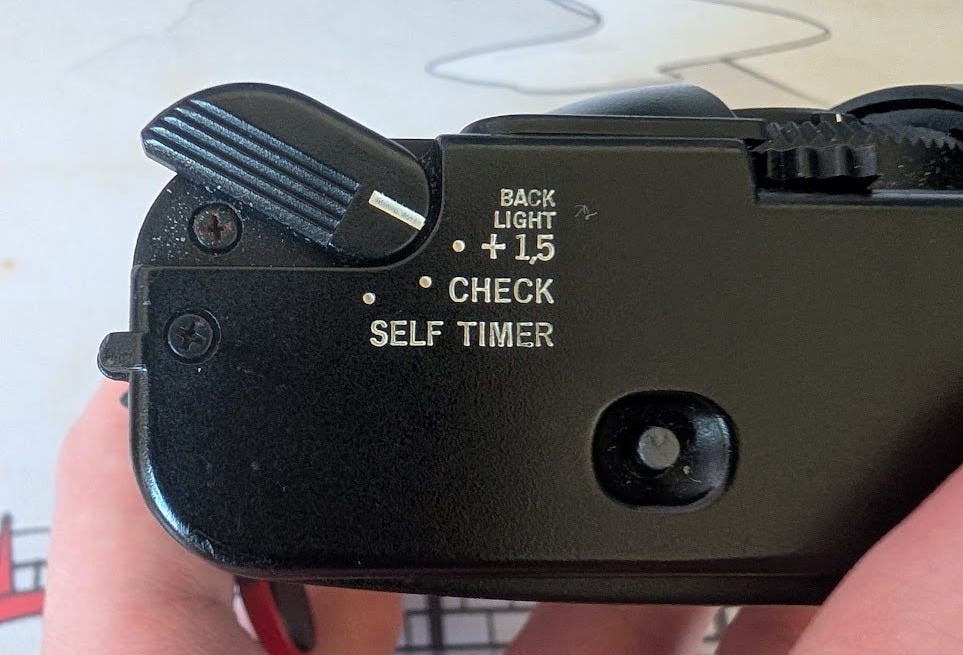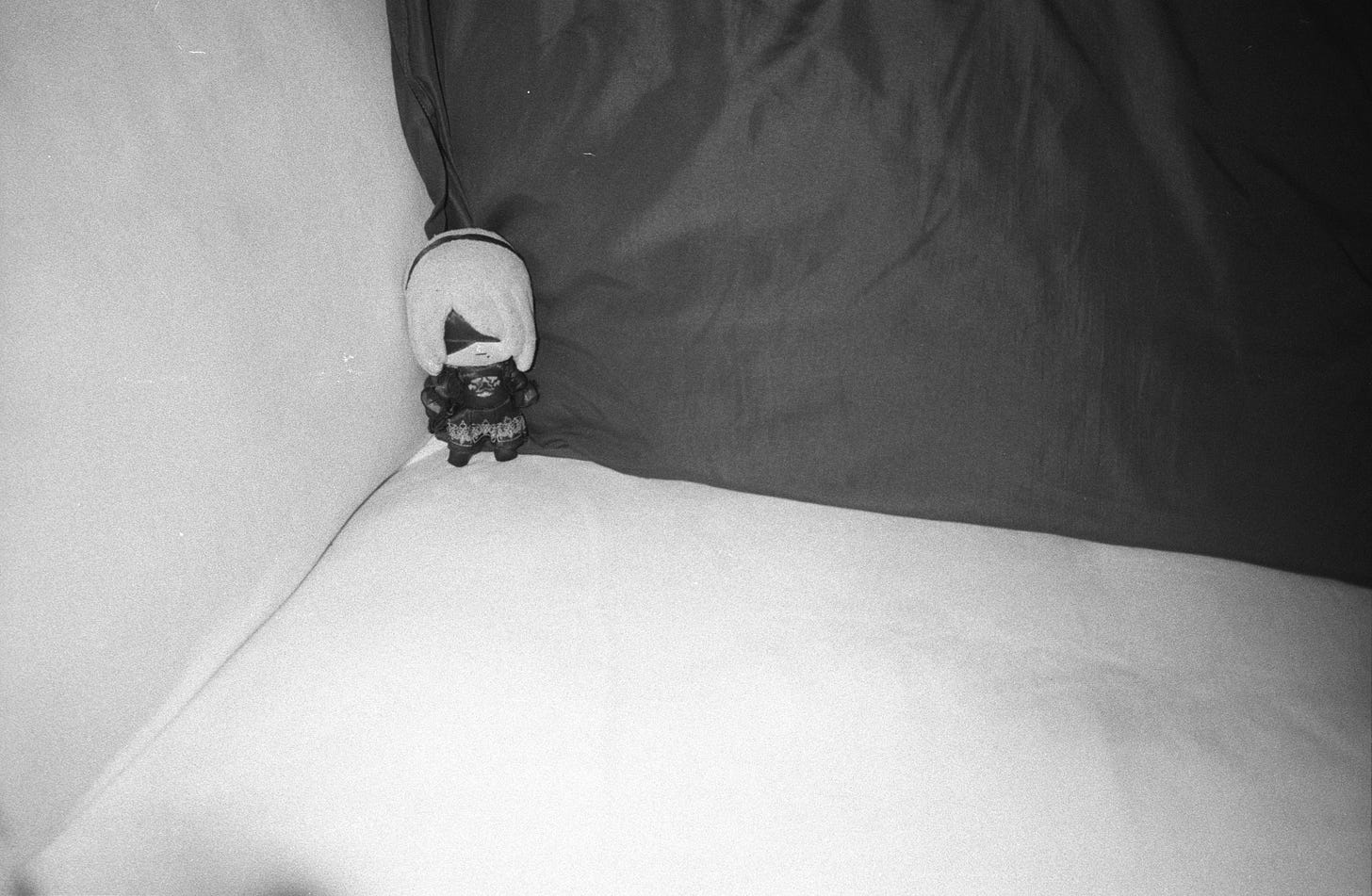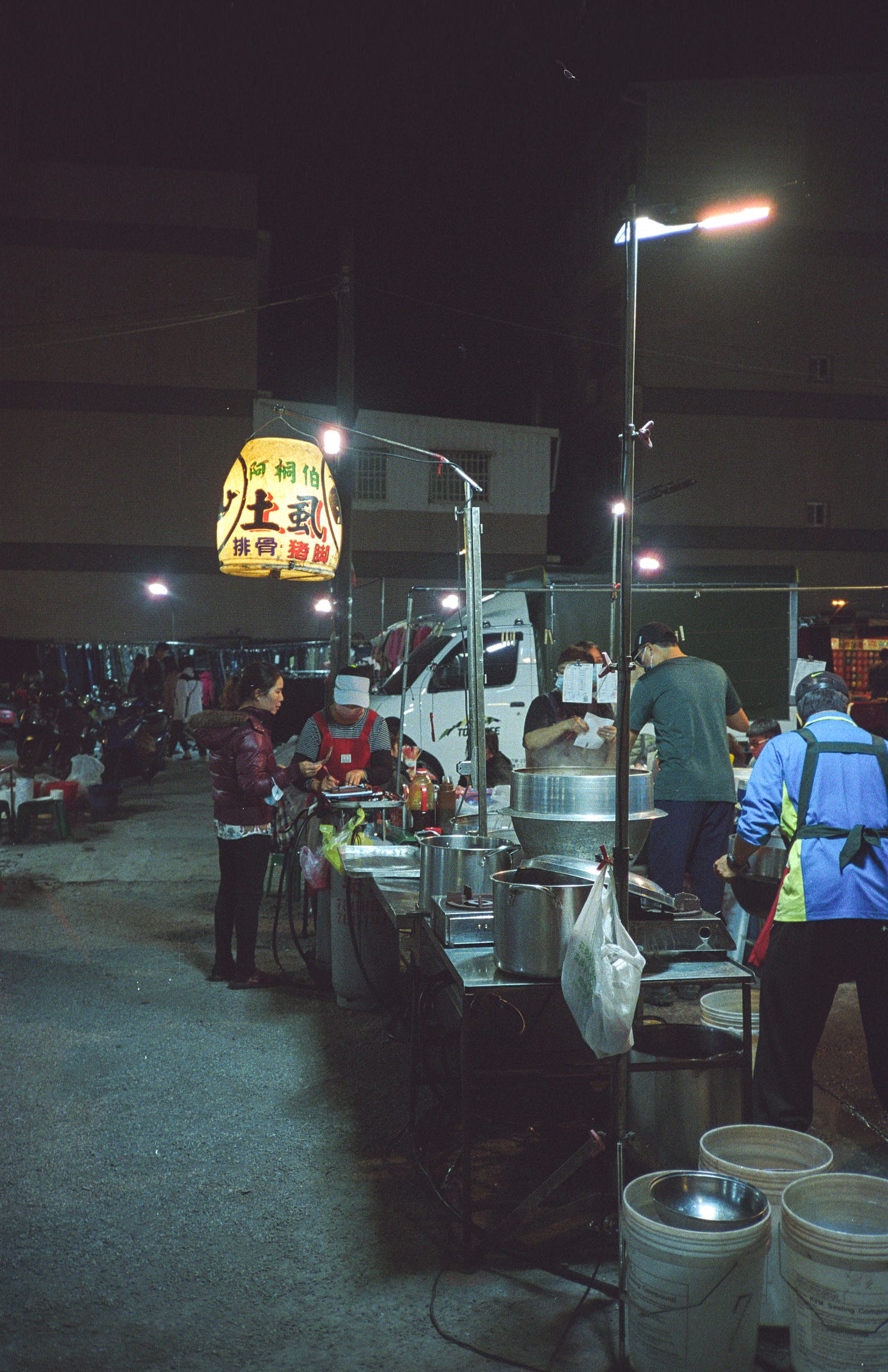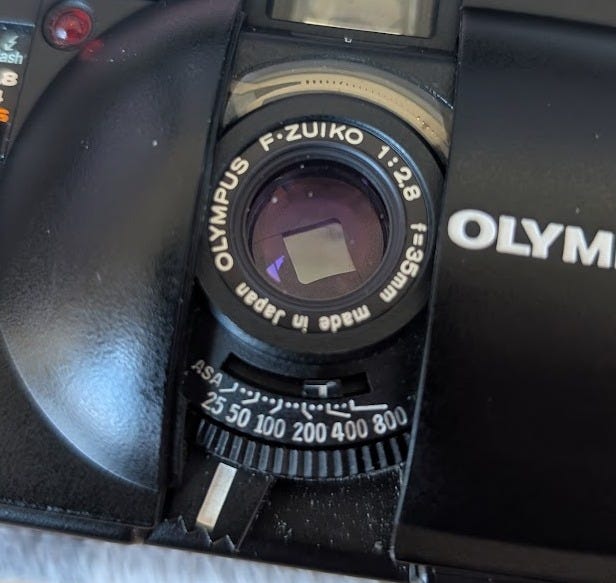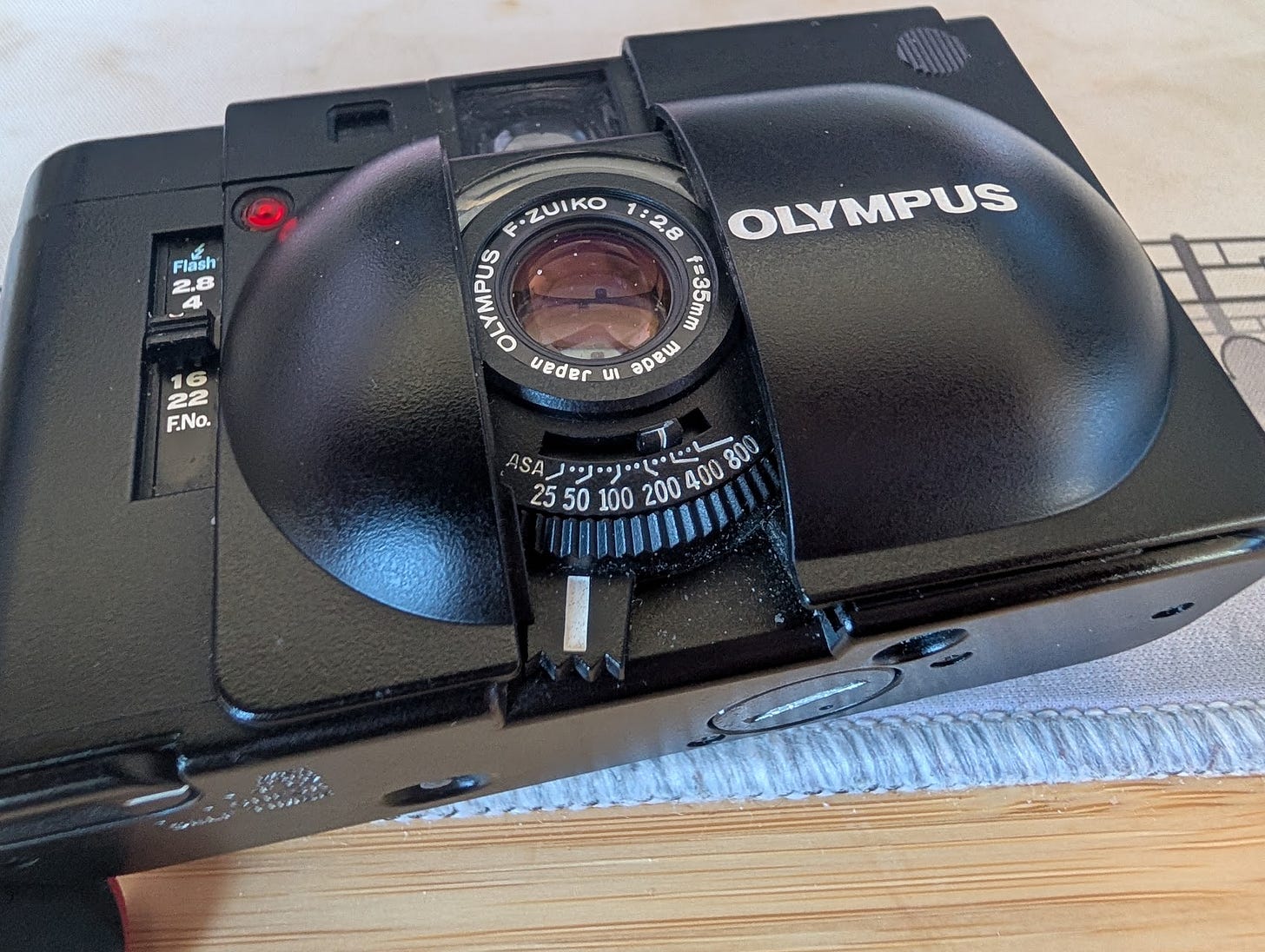Olympus XA - Review
A solid compact option for a daily carry camera
The Olympus XA was my second film camera. I had run into some issues with my Canonet, and knew that eventually I’d have an SLR or one of the rangefinder systems. I knew the Canonet was pretty repairable, but with an upcoming trip I didn’t want to chance that being my only camera, so I was off to Ebay and Japanese camera shops to look for my next camera.
The XA really stood out to me—I liked rangefinder focusing and I knew I wanted a manual focus compact camera with manual aperture control that was small enough to fit in a pocket. That limited my options—Olympus XA, Contax T, and a few Rollei options.
I discounted the Rollei options because I wanted a rangefinder rather than zone focus, and I saw a good deal on an XA so I jumped on it. I still do want to try a Contax T at some point.
I’ve run 5 rolls through the XA now.
Size and Form Factor
This is the ultimate compact film camera; I think you’d be hard pressed to find a more feature packed camera in a comparable size. It slips comfortably into any pockets I have, and otherwise lives inside my camera bag. The sliding cover which covers both the lens and viewfinder optics means there are no lens caps to keep track of and no worries about tossing the camera around.
For such a small camera, the controls are surprisingly usable. There’s a big lever for aperture that’s simple to operate without looking, and the focus has enough throw to be easy to use. One does have to be somewhat careful to not smudge the front element with your finger—it is recessed below the front edge of the cover but still stands pretty proud from the lens rim. Here’s me operating the camera:
The short film path means I can routinely squeeze tons of extra frames onto a roll—I’ve gotten a full 39 frames from a roll of Ektachrome before.
Features and Controls
The XA features a +1.5EV compensation switch and an electronic self timer, as well as a flash mode. The self time switch conveniently sticks out to help stabilize the camera! It does, however, mean you cannot use the +1.5EV switch with the self timer.
Film winding is via a disposable camera style thumb ratchet wheel. No single throw levers here.
I bought mine with the accessory flash module. It accepts a single AA battery and is relatively compact. It works pretty well, although I rarely shoot flash. The flash increases the width of the camera by almost 50%, so I almost never carry it.
In a pinch, the camera can be entirely operated one-handed by a right handed user, which has come in handy a few times. (Buyer beware, this is a good way to waste a frame…as I just did trying to demonstrate this on video.)
Lens, Focus, and Optics
The XA uses a two bladed aperture with a square opening, and as a result flares in a pretty unique way. However, it does not produce the nicest looking bokeh. Beyond that, the lens works very well and is very sharp, with minimal distortion. f/2.8 in a camera of this size is quite the feature.
The rangefinder patch is reasonably sized and bright. I don’t have problems using the focus, but as a glasses wearer, I sometimes have trouble seeing the shutter speed indicator in the viewfinder due to eye relief.
Exposure
The XA is aperture priority only, f/2.8 to f/16, with an film EI range of 25 to 800. The meter is accurate with modern button cell batteries. The flash mode also meters accurately with the accessory flash. No big notes on the exposure here, which is a good thing—it does a solid job. It does not have a mechanical mode, so it must be used with a battery.
Pitfalls and Problems
The shutter button on this camera is…unique. It uses a piezoelectric button with no real travel that is hair-trigger sensitive. I’ve never wasted more frames with this camera than any other. I guess the extra frames from the short film path get wasted by the shutter button and I net out even. Of course, I’ve developed a few habits to help prevent this, but it is something noticeable, and does result in me wasting at least a frame or two per roll.
In the above clip, I’ve fired the shutter. notice that the button doesn’t move at all. Very little pressure is required.
Conclusion
If you find a good deal on this camera, you should try it. For anyone looking for a semi-automatic camera, this is one of those cameras you’ll probably keep and use for a long time. It fills the pocket camera niche nearly perfectly and the low price keeps it well within reach. While I find that I tend to reach for my FE2 more frequently when I set out to make an image (better controls, full manual, better viewfinder, etc.), the XA is the camera that gets tossed into my jacket pocket. It’s unobtrusive on the street and I can basically forget about it until I need it, when it springs to life, optimized for speed and ease of use. It's cheap and durable enough that it doesn't require careful handling. They say the best camera is the one you have with you, and the XA is that exact concept made real.


